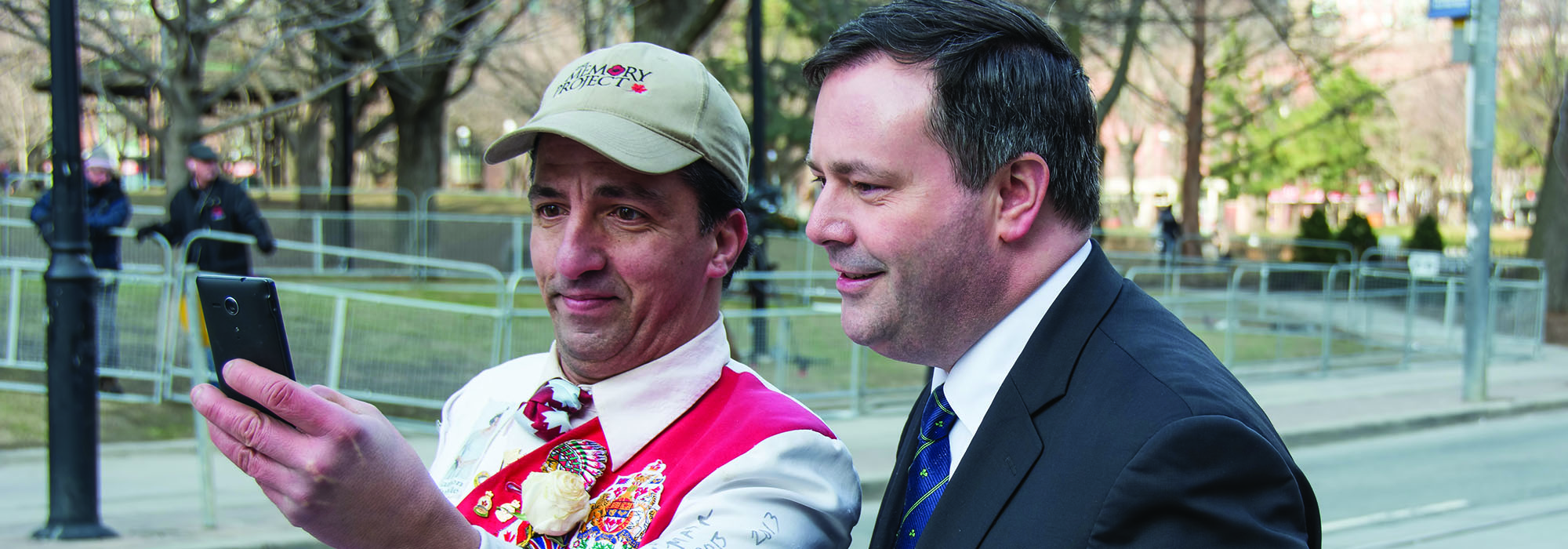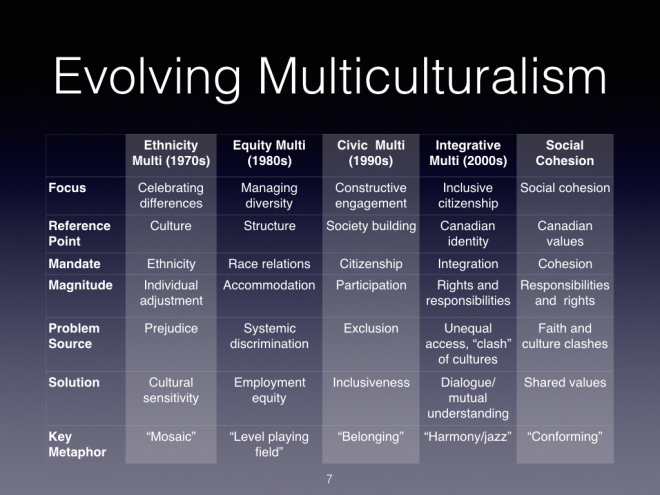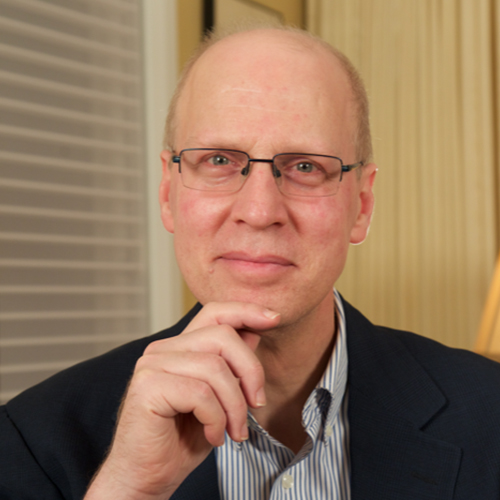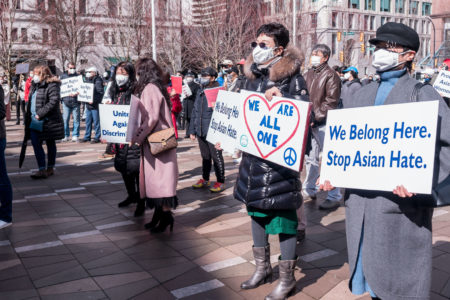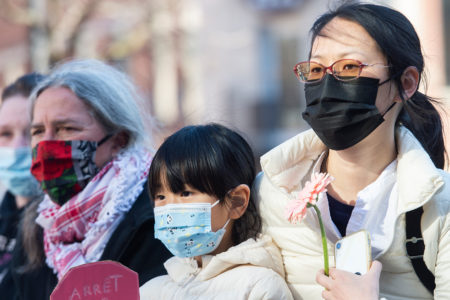
How has government language and programming changed under the Conservative government, and what is the legacy of Jason Kenney, the Minister for Multiculturalism? And what has been the impact of the niqab controversy and Conservative wedge politics on that legacy?
The overall context is that Canada’s diversity continues to increase, given increased non-European immigration. Diversity varies regionally and municipally, with B.C. and Ontario the most diverse, the Atlantic provinces and cities the least.
Along with this increased diversity, Canadian multiculturalism has continued to evolve since the policy was announced in 1971. The policy and subsequent act had two main aspects: cultural recognition and equity, both designed to further integration.
The following table captures the evolution from “celebrating differences”to the Harper government’s emphasis on social cohesion. To respond to perceived faith and culture clashes, greater emphasis was placed on shared values, and the original metaphor of the cultural mosaic shifted to “conforming,”a contrast to the “harmony/jazz”of a more fluid approach to integration and accommodation.
But what were the main policy and program changes made by Minister Kenney since 2007?
Early on, he articulated his vision of multiculturalism, linked closely to citizenship, as follows:
But having criss-crossed this great country; having attended hundreds of events and talked to thousands of new Canadians, I am certain of this: we all want a multiculturalism that builds bridges, not walls, between communities.
We want a Canada where we can celebrate our different cultural traditions, but not at the expense of sharing common Canadian traditions.
We want a country where freedom of conscience is deeply respected, but where we also share basic political values, like a belief in human dignity, equality of opportunity, and the rule of law.
We don’t want a Canada that is a hotel, where people come and go with no abiding connection to our past or to one another, where citizenship means only access to a convenient passport. We want a Canada where we are citizens loyal first and finally to this country and her historically grounded values.
The key to building such a Canada, to maintaining our model of unity-in-diversity, is the successful integration of newcomers.
And that should be the focus of today’s multiculturalism.
Emphasis accordingly shifted from cross-cultural understanding and inclusion to integration and social cohesion. Employment equity within government was replaced by making government more responsive to the needs of Canada’s diverse population. Combating racism and discrimination and encouraging civic participation was replaced by engaging in international discussions, largely focussed on anti-Semitism. Faith communities and related issues became explicitly part of multiculturalism.
While Kenney “flirted”with replacing multiculturalism with “pluralism,” he soon recognized the long-standing “brand value”of multiculturalism and its place in the Charter. No changes were made to the Multiculturalism Act.
Government funding support through grants and contributions was reoriented to these new objectives in the new Inter-Action program. The mix of organizations supported changed accordingly. A new “events stream”was created to support “food and folklore”events that encouraged integration between communities (as well as building political support).
Explicit linkages with citizenship were introduced. The Discover Canada citizenship guide emphasized common Canadian values, a more Conservative historical narrative, and integration rather than accommodation. Symbols that highlight Canadian historical connections to Britain, including the Crown, were highlighted.
The Government delivered on historical recognition for immigration and war-time internment for a number of communities (Chinese, Jewish, Italian, Sikh, and Ukrainian Canadians). These historical events were incorporated into Discover Canada.
Black History and Asian Heritage Months continued, with more emphasis on Canadian history and military. The Paul Yuzyk Award (“the father of multiculturalism”)was created to recognize contributions to Canadian multiculturalism and integration of newcomers (as well as appropriating multiculturalism for the Conservatives).
The Canadian Race Relations Foundation broadened its programming to include inter-faith initiatives and a greater emphasis on common values. The Government invested $30 million into the Global Centre for Pluralism of the Aga Khan based in Ottawa.
Existing federal and provincial multiculturalism networks were maintained, albeit weakened given reduced resources.
Multiculturalism was shifted from Canadian Heritage to Citizenship and Immigration (CIC) in 2008 and folded into CIC’s organizational structure. Resources were reallocated to other functions in CIC. Given CIC’s “centre of gravity”of immigration and decreased emphasis, the program declined in activity and importance.
Kenney remained Minister for Multiculturalism following the Cabinet shuffle of 2013 given the importance of the “fourth sister”in Canadian politics.
At the same time, political outreach to ethnic communities increased. Kenney — “curry in a hurry” — was on the road three weekends out of four, with up to 20 events per weekend. The new “events stream” furthered his outreach. These efforts, according to the Canada Election Survey and related polling, played off particularly well in the 2011 election with older, more well-established communities such as Italian, Greek, Portuguese, Jewish, Chinese and older South Asian communities.
However, this extensive outreach failed to stem the tide in the 2015 election, where the Liberals won 30 of the 33 ridings with majority visible minority population (mainly in the Greater Toronto Area and BC’s Lower mainland). The Conservatives only won two of these seats, losing decisively in terms of the popular vote for all these ridings: 32 percent compared to 52 percent for the Liberals).
Changes to multiculturalism took place in parallel with a greater focus on economic immigration, major refugee reform to reduce the number of refugee claimants, and the 2014 changes to the Citizenship Act making citizenship “harder to get and easier to lose.”The latter makes a clear distinction between born and naturalized Canadians, as the latter (including those born dual nationals) are subject to revocation in cases of terror or treason.
So have these changes made a difference to the multicultural fabric of Canada?
First, all parties continue to actively court ethnic communities. The Conservatives, to their credit, had taken this to a new level, arguing that new Canadians intrinsically shared conservative values like hard work and family. They maintained current levels of immigration (about 250,000 per year) throughout the 2008 recession. Unlike Europe or the U.S., we have no major political party opposed to large-scale immigration. Multiculturalism generally has not been a wedge issue. While there are significant differences, Canadian debate focusses more on specific policies rather than existential debates, Quebec excepted.
However, this approach shifted dramatically in the lead up to the 2015 election and during the campaign itself as the Conservative government increasing practiced wedge politics, singling out Canadian Muslims on issues as diverse as the niqab at citizenship ceremonies, spousal abuse, ‘honour’ crimes and ‘snitch lines.’ Kenney, who had been so vocal in his condemnation in the Parti québécois’s proposed Quebec Values Charter, was complicit in this change. The end result undermined Canada’s social fabric and ultimately backfired as an electoral strategy. The Conservative Party will need to reflect upon the possible long-term effect in its efforts to gain and maintain new Canadian support.
Secondly, while all political parties have closer relations with some communities, the Conservative government was more willing to “pick sides”than others. The shift in Canadian Mid-East policy towards unequivocal support for the Netanyahu government was the most notable example.
Thirdly, the Government emphasized symbolic measures. Citizenship judges are diverse but will largely be limited to a ceremonial role under the new Citizenship Act. But, only three out of some 200 federal judicial appointments were non-white. Visible minority ministers were in junior positions (multiculturalism, sport, seniors). Senate appointments, however, were more representative.
Fourthly, broadening racism and discrimination to relations within and among communities is welcome, given that our largest cities are 25-50 percent visible minorities. However, the government’s almost exclusive focus on anti-Semitism has neglected challenges faced by visible minorities, including Canadian Muslims. While the Conservative government cultivated strong relations with Muslim minority communities such as the Ahmadiyyas and Ismailis, it made little effort to develop relations with ‘mainstream’ Sunni and Shia Muslim communities.
Fifthly, these changes need to be seen in the context of a shift towards economic immigrants and tighter citizenship rules that will likely, over time, slowly drive down the current naturalization rate of 85 percent. This change will affect some communities more than others.
Overall, under Kenney, the Canadian model of multiculturalism returned to its roots by emphasizing integration, recognizing the diverse cultural identities of Canadians so that all Canadians, whatever their origins, could feel part of Canada. However, Canadian Muslims were singled out, wedge politics practiced and equity considerations were downplayed.
As part of citizenship, Kenney implemented a more explicit approach to shared identity and values. “Harmony/jazz”ad hoc improvisation was replaced by “conforming,” to clearer expectations, correcting an imbalance that implied Canada was a clean slate or as a hotel without any sense of what was acceptable and what was not.
Had the Conservative government not played ‘wedge politics’ with Canadian Muslims, it would have ensured a reasonable legacy for the incoming government to build upon. But having done so, it has tarnished its legacy, and perhaps harmed its future political prospects.
For more thoughts on Jason Kenney, Stephen Harper, and the Conservative government’s stance on multiculturalism, please see my ‘transition advice’ post, Multiculturalism: Getting the Balance Right – Reflections for a new government.
Photo: rmnoa357 / Shutterstock.com



